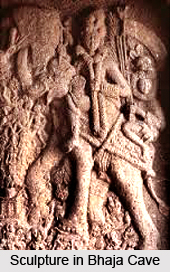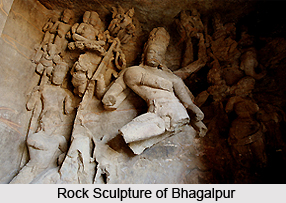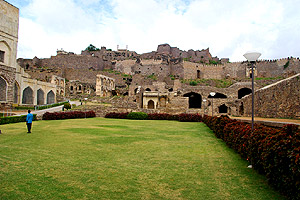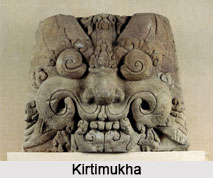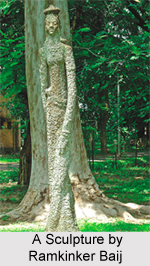 Contemporary Indian Sculpture is vocal about the Indian identity owing to the various forms and Modus Operandi about the visual art zone. Sculpture essentially being a public art lays bare the cudgels of modernity, avant-garde expressionistic modes and futuristic ways. Indian Contemporary Art in the break of 21st century is as varied as it had never been before. While the middle and pre independent era manifested the lack of independence on the part of Indian sculptors, as they were mostly commissioned for work and under quintessential patronage, post liberalization era witnessed the affluent emergence of new array of ideals which was a far cry from the stains of dogma or ideological shackles.
Contemporary Indian Sculpture is vocal about the Indian identity owing to the various forms and Modus Operandi about the visual art zone. Sculpture essentially being a public art lays bare the cudgels of modernity, avant-garde expressionistic modes and futuristic ways. Indian Contemporary Art in the break of 21st century is as varied as it had never been before. While the middle and pre independent era manifested the lack of independence on the part of Indian sculptors, as they were mostly commissioned for work and under quintessential patronage, post liberalization era witnessed the affluent emergence of new array of ideals which was a far cry from the stains of dogma or ideological shackles.
Developments of Contemporary Indian Sculpture
Contemporary painting and sculpture hardly bear the copious strings of inscrutability. They breathe the similar air, the similar mother body. Alienated from the Indian tradition they are bizarrely hinged to the modern eclectic notions of international space. From the elitist business houses and royal families, it has now entered the drawing rooms of the middle-class buyers and from domestic market it is now travelling offshore to fetch immense; often astronomical prices. To cater the demands of the newly emerging upper and middle social classes, intense and exaggerated realism during this period was introduced. The mid Victorian ideas on naturalism and smugness plated the colonial legacy of the British. However the British race instigated the sculptural zone with the fiery air of individualism. The iconographic, symbolical, religious ideals of Indian sculpture soon became a far cry of the past to invite the realist naturalist heights.
After being freed from the yoke towards forties, the sculptural institution started looking up to western world for dosages of inspiration. Phases of transition from the academism to well defined non objectivism with new and unconventional materials had been the watchword. The logical Cul-de sac with the perspectives of necessary height and measures indeed provides a meaningful introspection.
Full realisation of concepts had been the benchmark for the modern sculpture. The influence of the isms, concepts of desolation, semi surrealism, even got accentuated. Changes in the concept of colour, throws light on the paradoxical nature of modern and traditional dwellings. In case of sculpture, it is the material that is of fundamental importance determining the criticality of the concept. The sharp lines, the variegated textures, the incision the relief the excellence of etching all build up the manner and matter of the sculptural art.
Concepts in Contemporary Indian Sculpture
Expression wise deeper and newer forms of art evolved as India maintained her connections with the world beyond through both sea and land routes the influence of culture of other lands have always been felt in the art map of India. Stunningly intricate designs, sculptural artefacts, mark the archetypal feature of the lost history, of the quintessential Indian overtones. When it comes to Indian cultural abode, a major portion is indeed formulated by the sculptures. 
Indian sculptural abode has gone international with the unflinching traits of globalization and Cultural Revolution far across and far away, inland and outland. Beginning of modernism in Indian sculpture traced to its adaptation of western academic art traditions in the early 20th century. This is one of the reasons why one would still come across a statue of the Hindu gods amid hordes of Indian sculptures that represent the modern man and his environs. However, Post modern age compliments post modern patterns in Sculptural rendezvous with the nadirs of various influxes in the idealistic and social zone. The tumults of impressionism, cubism, Dadaism and Avant Garde trends and tendencies have silhouetted the artistic penumbra. They have coaxed and cajoled their ways into the spectrum, the confines of the sculptural artistry.
Three dominant features cloud the paramount sky of the Indian sculptures. They reiterate with time in the crescendos of art and sculpture. Unique indigenous language unconventional materials such as concrete gravel and cement looking to the rural landscape and tribal communities for subjects which reaffirm the unquenchable quest for identity. The second is the use of Computer Graphics, photography and modern techno buzz and an amalgamation of other media in the threshold of the creation of sculptural art amidst the Indian artistic canvas. Again last but not the least the exploration for individualist language of expression, the affirmation of Pseudo realism, an art genre, which solely originated in India. The stalwarts of Indian arts carried forward their nationalistic ideas which were born in British era.
Though modern Indian sculpture walks the journey of International vocabulary, yet the sources are ingrained in Indian history and Indian culture.
Contemporaneity of Contemporary Sculpture
Indian sculpture is pregnant with the streaks of contemporary flavours and the traditional hangovers. The concept of modernity in sculptural sky enamours the aforesaid conditional term. Tradition had been the key word to the body of Indian Sculpture however with the forward march of time the sculptural canvas had been silhouetted by the darkness of modernist impulses and the various isms. The quested query reverberates within the minds of chosen few: as to how much contemporary is the contemporary sculptural zone. The transitions, the ways, the attributes, the cyclical developments all are but the fall outs of the similar transgression. Contemporary vibes do not necessarily ascertain the features of the current age, the present genre, and it is for the sole reason as to why the medieval sculptures or the Indus ones are still contemporary. Ages would witness the dawn of revival times would stand before the sea of eternity yet the sculptures of the present ages, the meaningful ones would be immortal.
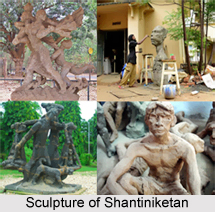 Sculptors of the Contemporary Age
Sculptors of the Contemporary Age
Nandalal Bose, one of the distinguished pupils of Abanindranath Tagore had been influenced by the later. Quite naturally, the artistic trends, styles of the Tagore twilight had merged into the artistic shadows of the former. In the painting of a woman in the act of doing `Pranam` one sees both simplicity and directness of his pictorialism as also the significant impact on his work of the vitality of folk art. Jamini Roy`s works mainly show cased the in and outs of folk tradition. Singularly stylised, they are conceived in emphatic flat spaces and strong lines. Most of the important Indian artists of this time Abanindranath Tagore, Nandalal Bose and Jamini Roy stayed away from this genre of art and instead had established an alternative school of art called the Bengal School with its centre at Shantiniketan. It is only in late nineteenth century that some Indian artists had infused the techniques of realism to depict Indian subjects using Indian motifs and from Indian view points. The pioneer in the new school of Indian realism was Raja Ravi Verma. Raja Ravi Verma depicted scenes from Indian mythologies and presented them in a realist-romanticist format. A spirit of humanism is celebrated throughout which is infused with a sense of spiritual which is reminiscent of the classical sculptural styles. Search for pure form induced by European aesthetics added new and interesting dimensions. Experiments with unusual materials of classical traditions folk and tribal sources profound effect on the artistic imagination is widely observed.
Indian art has reached a terribly high degree of sophistication and abstraction at various times in Indian history. Amalgamation of European and Oriental styles is what Indian sculptural scenario consists of.
